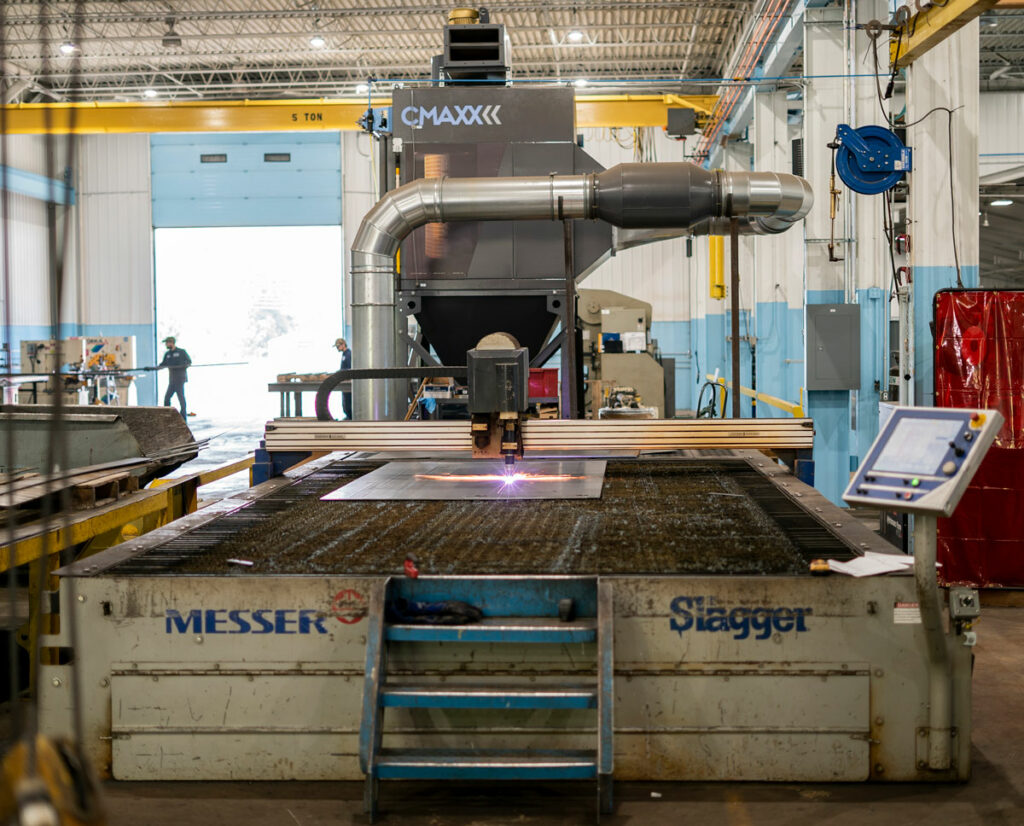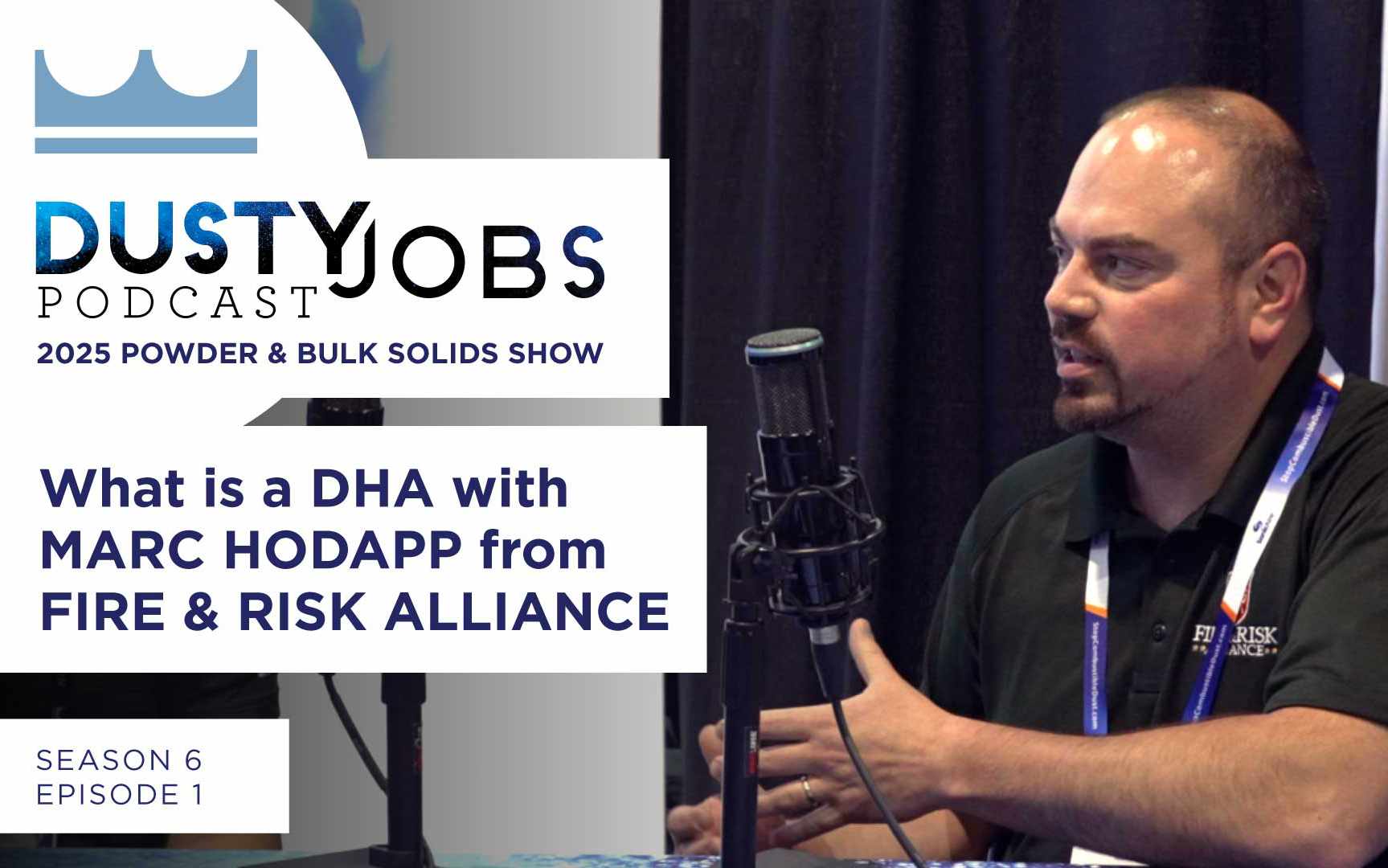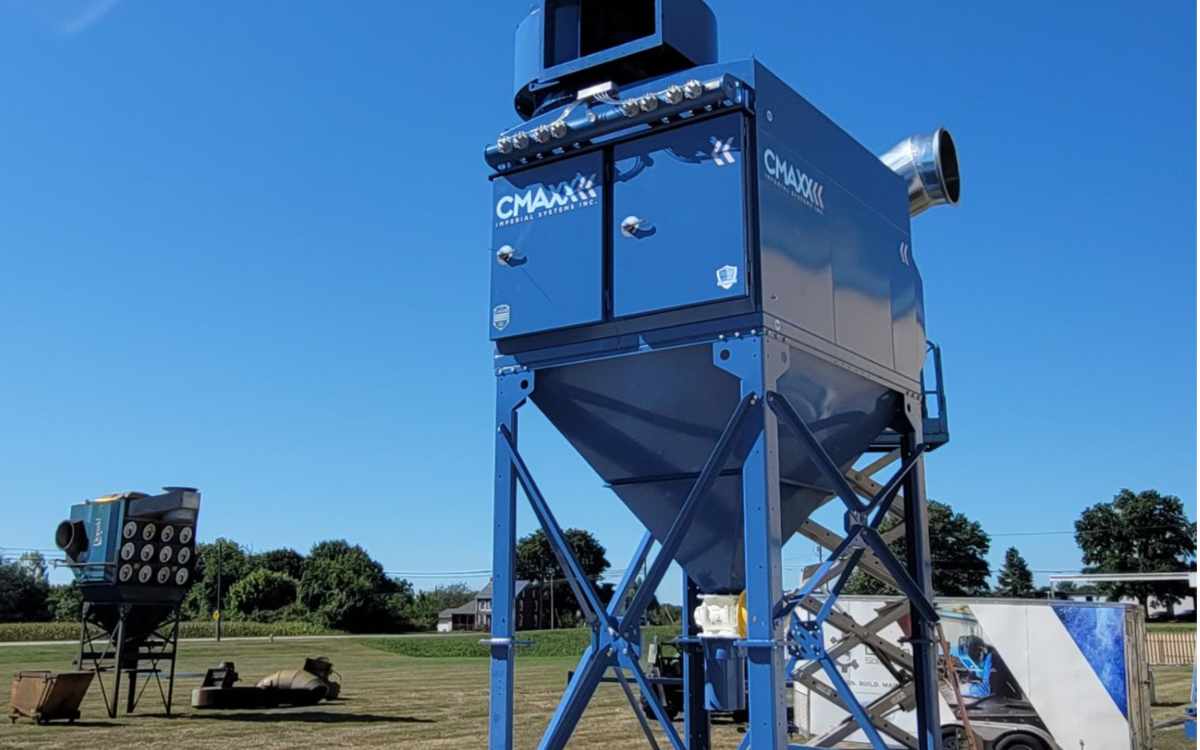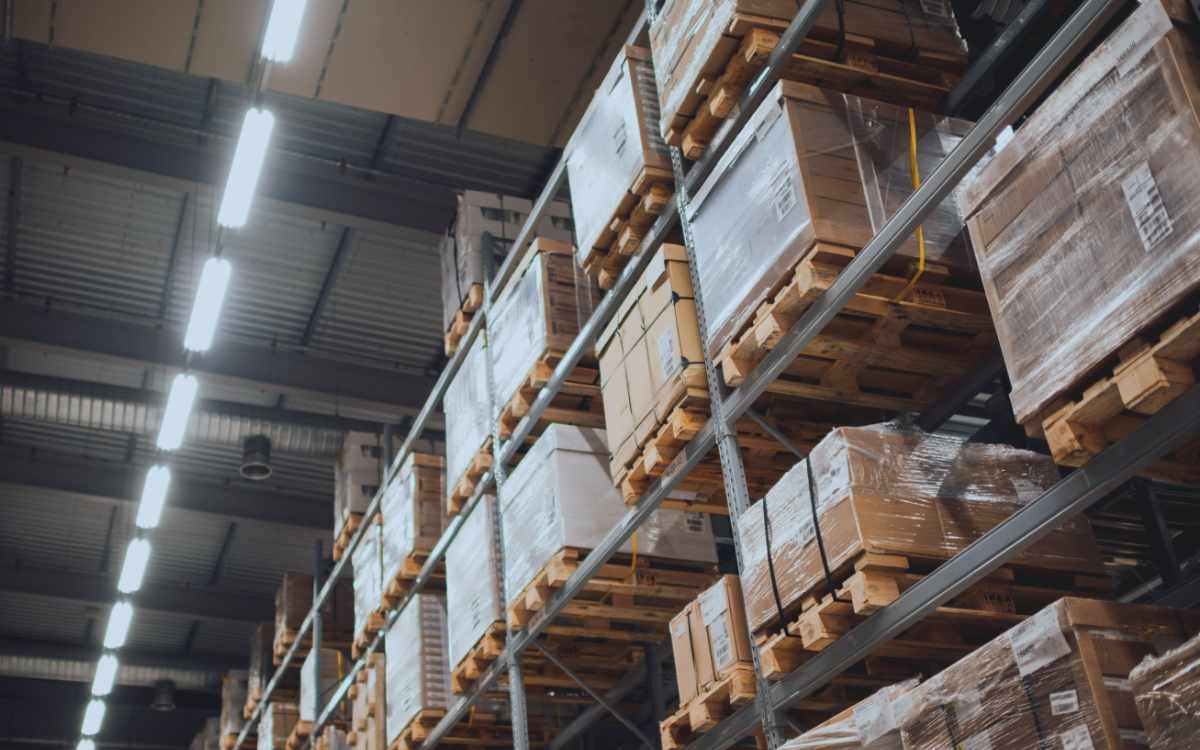Plasma cutting is a powerful tool for metal fabrication, but it also creates a significant challenge – dust. Above all, fine metal particles and harmful fumes can pose serious health risks to workers. They also contaminate the shop environment and even damage equipment. But fortunately, plasma cutting with zoned downdraft tables offers a strategic solution for effective dust control.
The Zoned Advantage: Targeted Capture for Airflow Efficiency
Unlike traditional flat-surface tables, zoned downdraft tables partition the cutting surface into individual sections, each equipped with its own damper to allow or restrict airflow. As a result, this targeted approach provides several key benefits:
- Reduced Airflow Requirements: Zoned tables require significantly less airflow compared to single-chamber designs. This is because only the active zone where cutting is occurring needs airflow, significantly reducing energy consumption, noise levels, and the size and cost of the required dust collector.
- Enhanced Dust Capture Efficiency: By focusing airflow on the active zone, dust and fumes have less opportunity to escape. This targeted capture approach improves air quality, protects worker health, and minimizes environmental pollution.
- Flexibility for Different Workpieces: Zoned tables can accommodate different-sized workpieces by activating only the zones covered by the workpiece. This eliminates unnecessary airflow over empty areas, further optimizing energy consumption and noise reduction.
Design Options in Zoned Downdraft Tables for Diverse Needs
Zoned downdraft tables are available in various configurations to cater to different workshop needs and workpiece sizes:
- Grid Zoning: Ideal for smaller tables, this layout divides the surface into evenly sized squares, each with its own duct connection.
- Sectional Zoning: This is perhaps the most common layout, and dampers can be adjusted based on where the cutting head is working. This maximizes surface coverage and minimizes airflow needs.
- Custom Zoning: For complex shapes or specific cutting patterns, custom zone layouts offer ultimate flexibility, ensuring optimal dust capture for any project.
Optimizing Dust Collection for Maximum Performance
Effective dust control in zoned downdraft tables goes beyond simply dividing the surface. Several key elements work in concert to ensure optimal performance:
- Ductwork Design: Properly sized and strategically positioned ducts are crucial for ensuring smooth airflow and efficient capture. Further, duct diameter, bends, and connections must be carefully considered for optimal performance.
- Damper Systems: Automated dampers can open and close individual zones, further reducing unnecessary airflow and optimizing energy consumption. Depending on the size of the cutting head, multiple zones may be open at a time.
- Airflow Velocity: Maintaining the correct airflow velocity within each zone is essential for efficient capture without excessive energy usage. So, balancing airflow velocity and energy efficiency is key.
Investing in a Cleaner and Safer Future
While zoned downdraft tables may require a higher initial investment compared to traditional flat-surface tables, the long-term benefits are significant. Reduced energy consumption, smaller dust collectors, improved worker health and safety, and a cleaner work environment all contribute to a positive return on investment. For shops prioritizing efficiency, safety, and environmental responsibility, zoned plasma cutting tables offer a strategic and sustainable solution to dust control challenges.


